

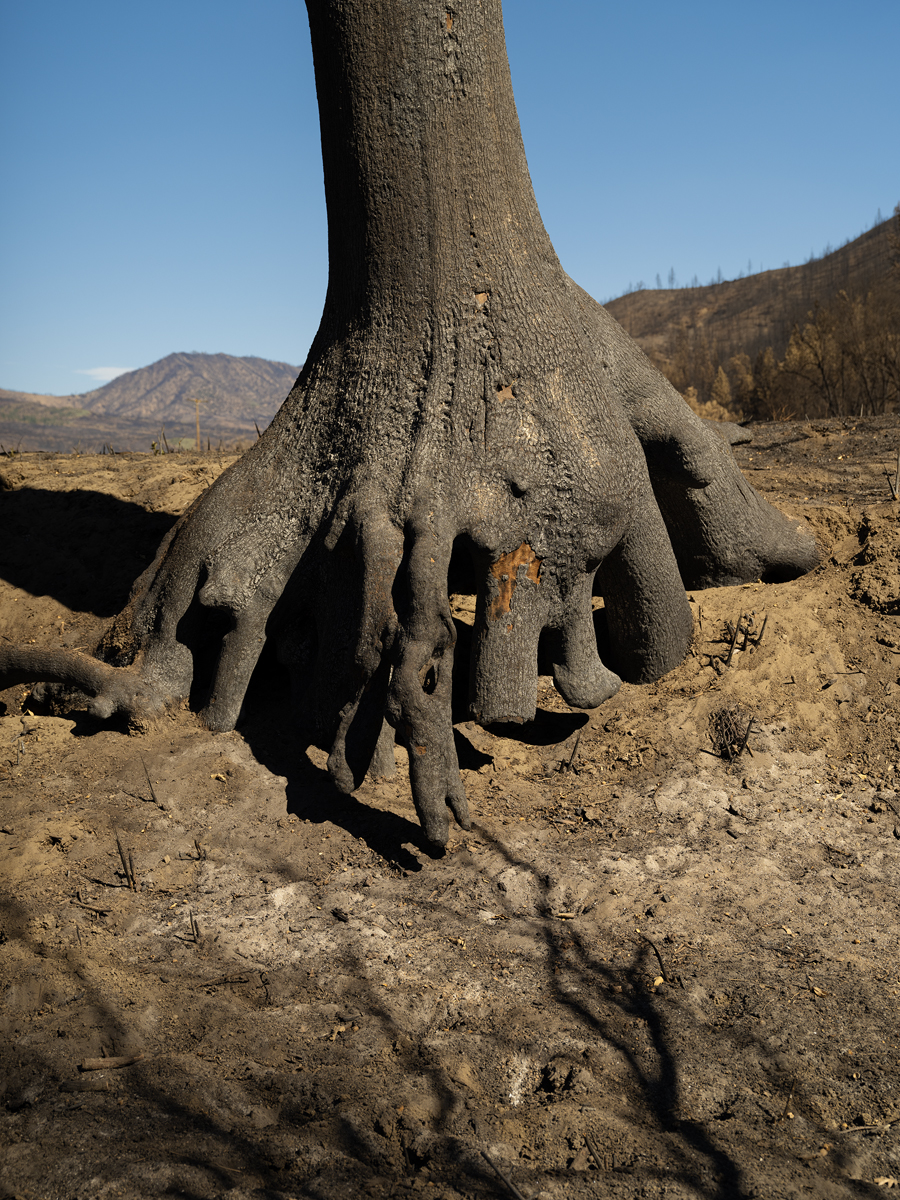
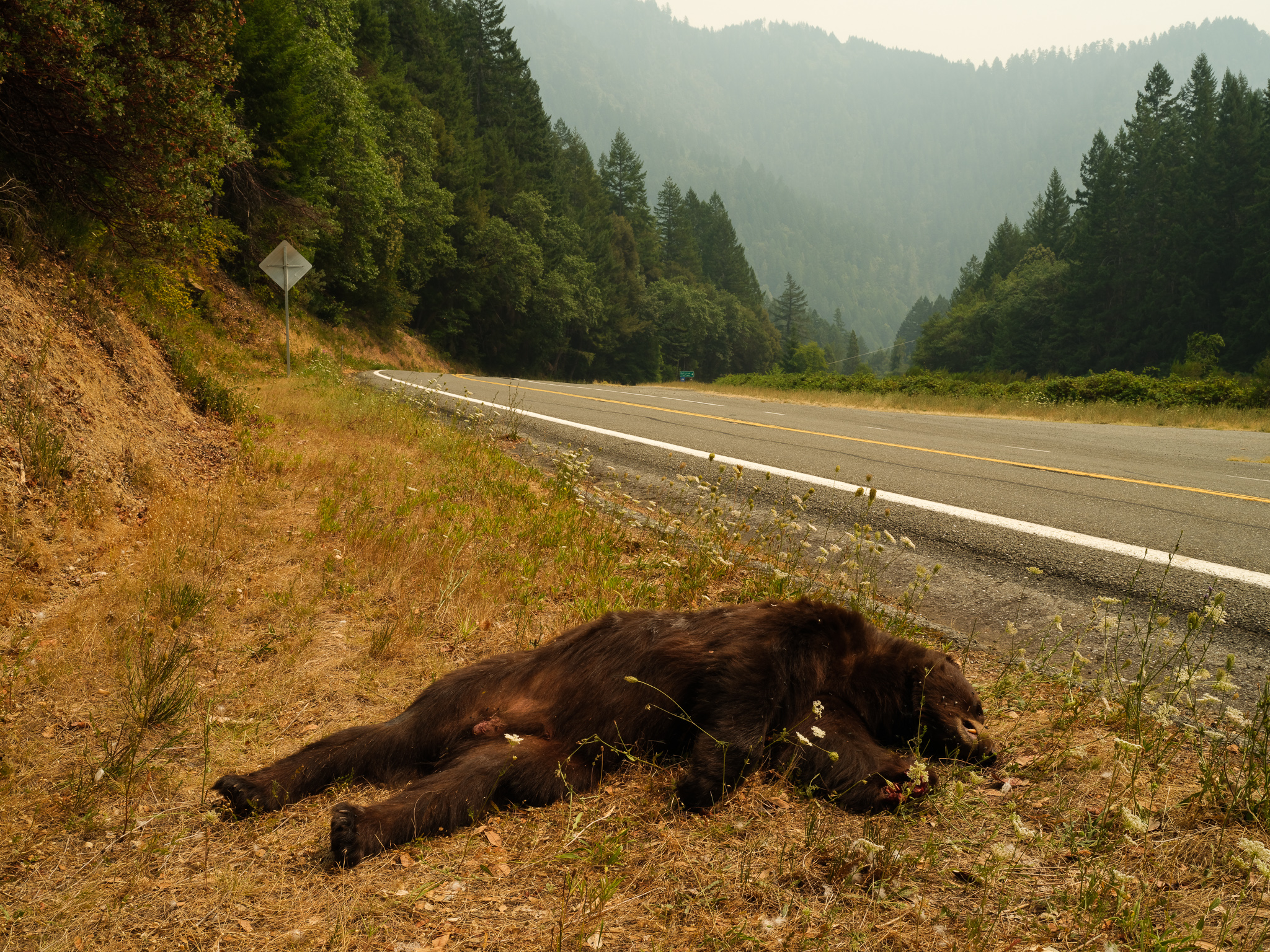
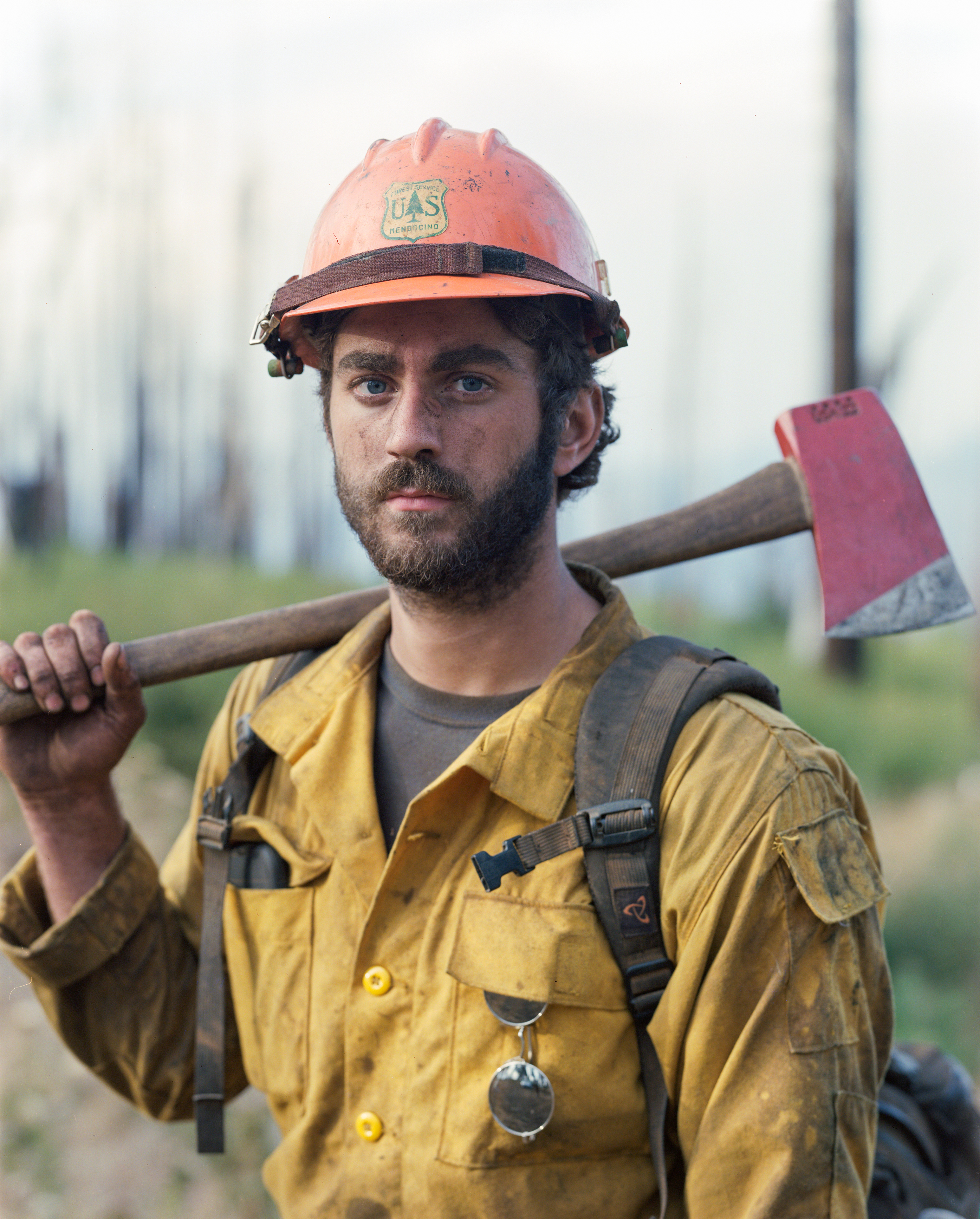
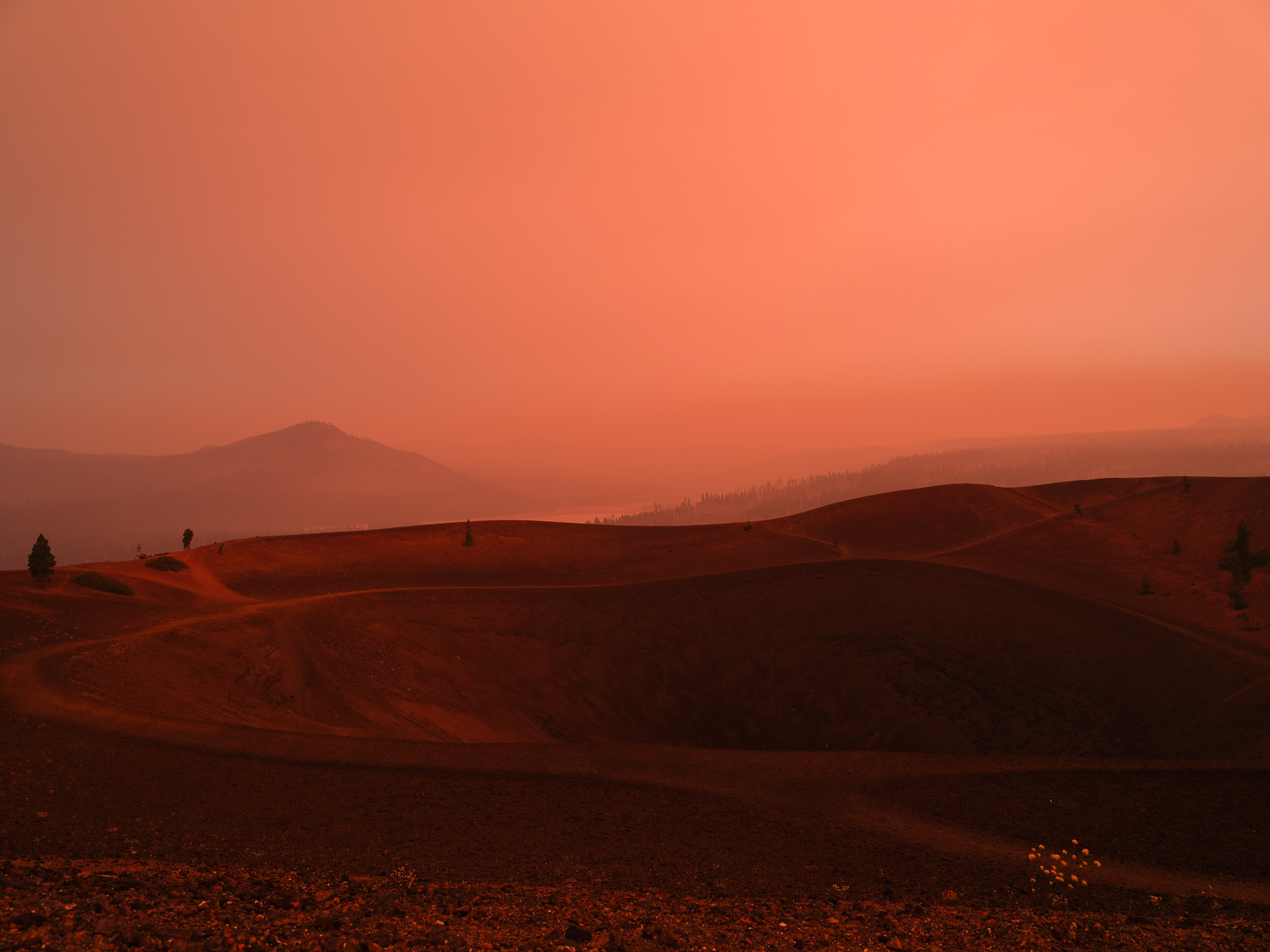
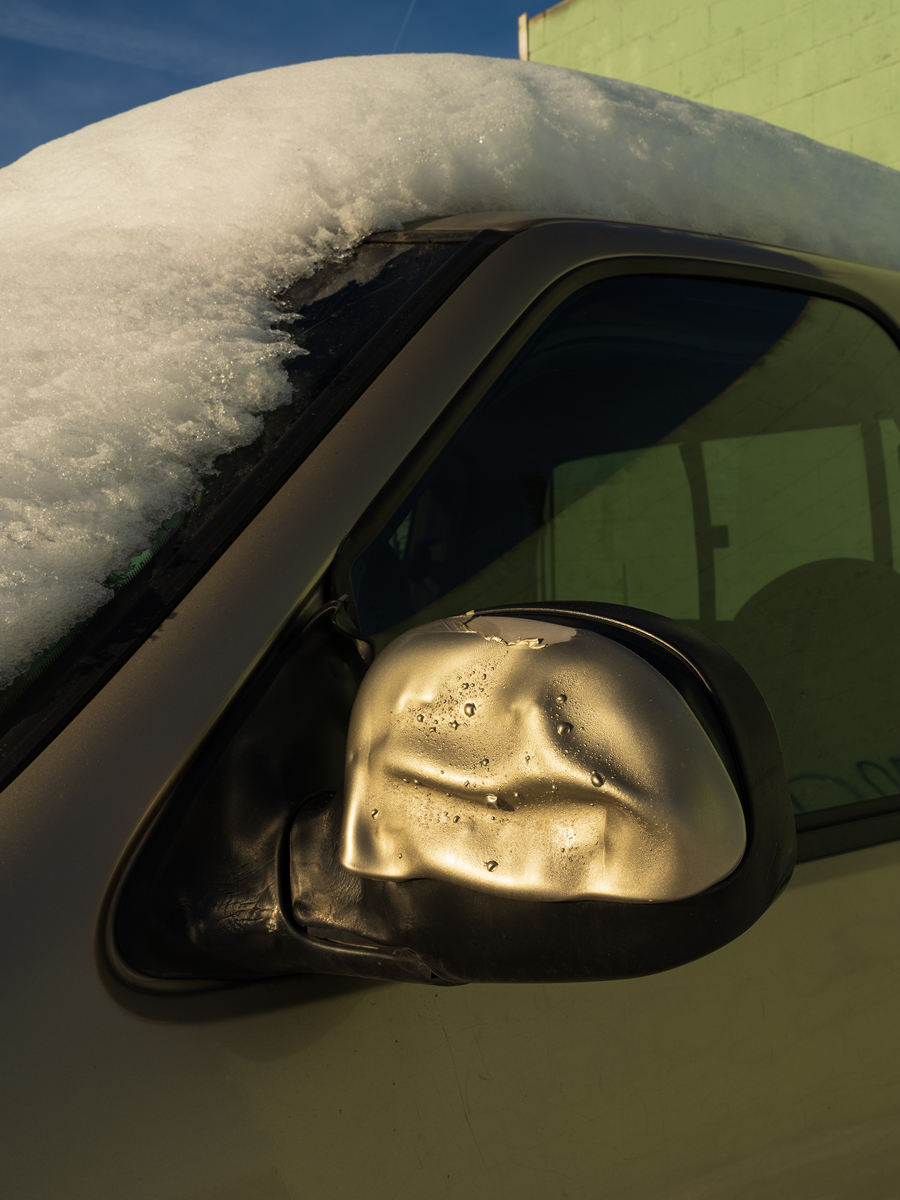



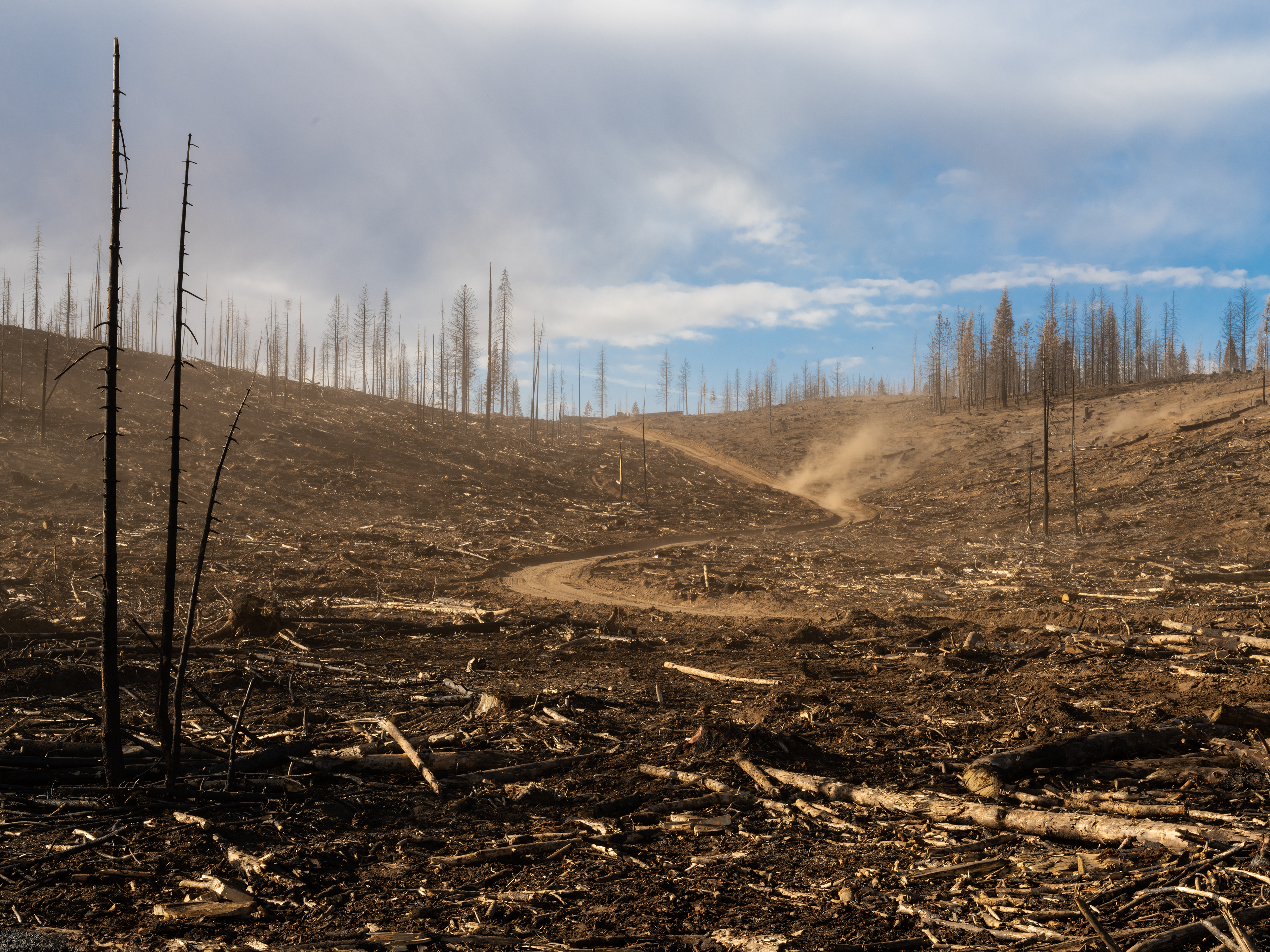

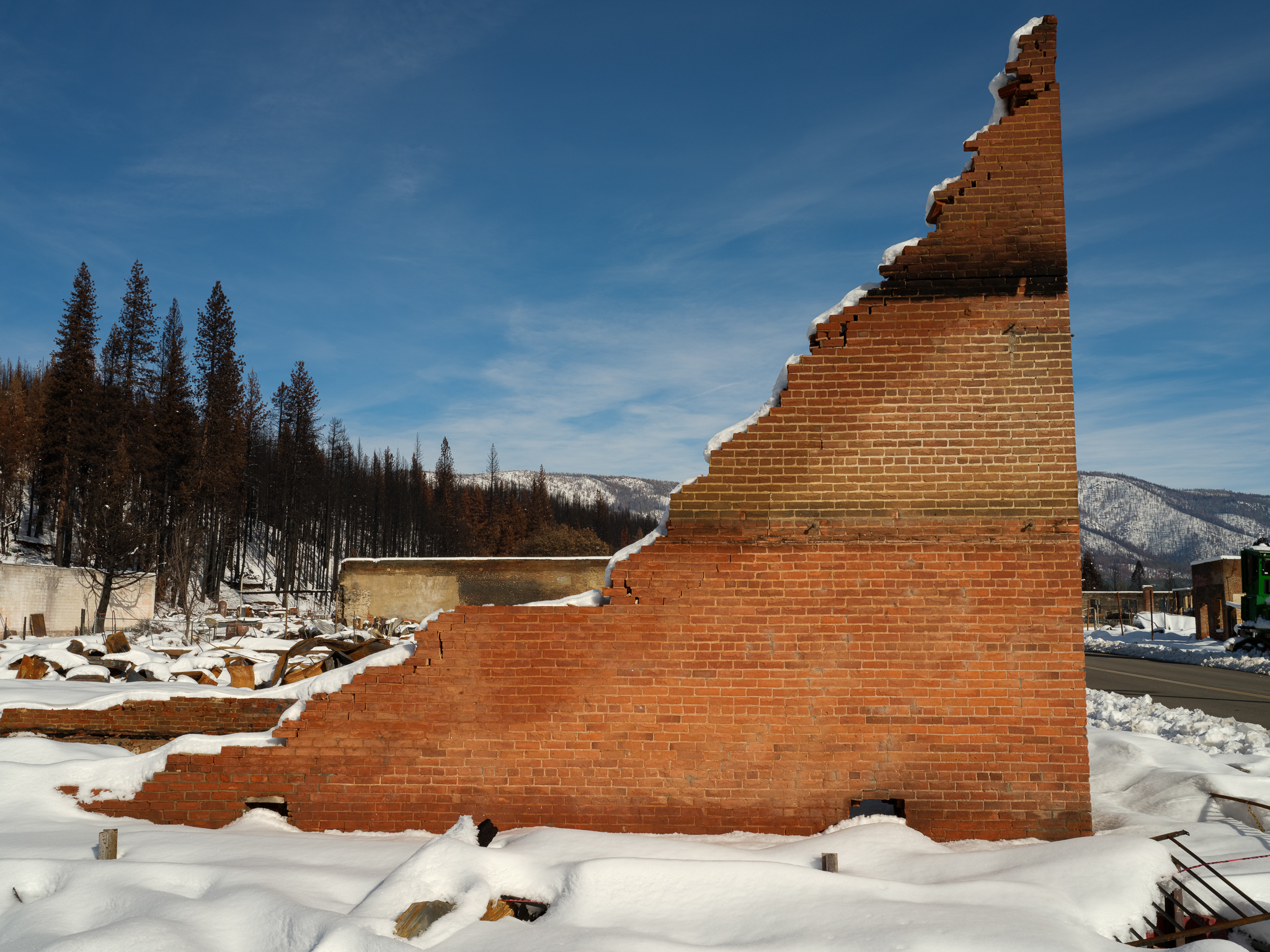

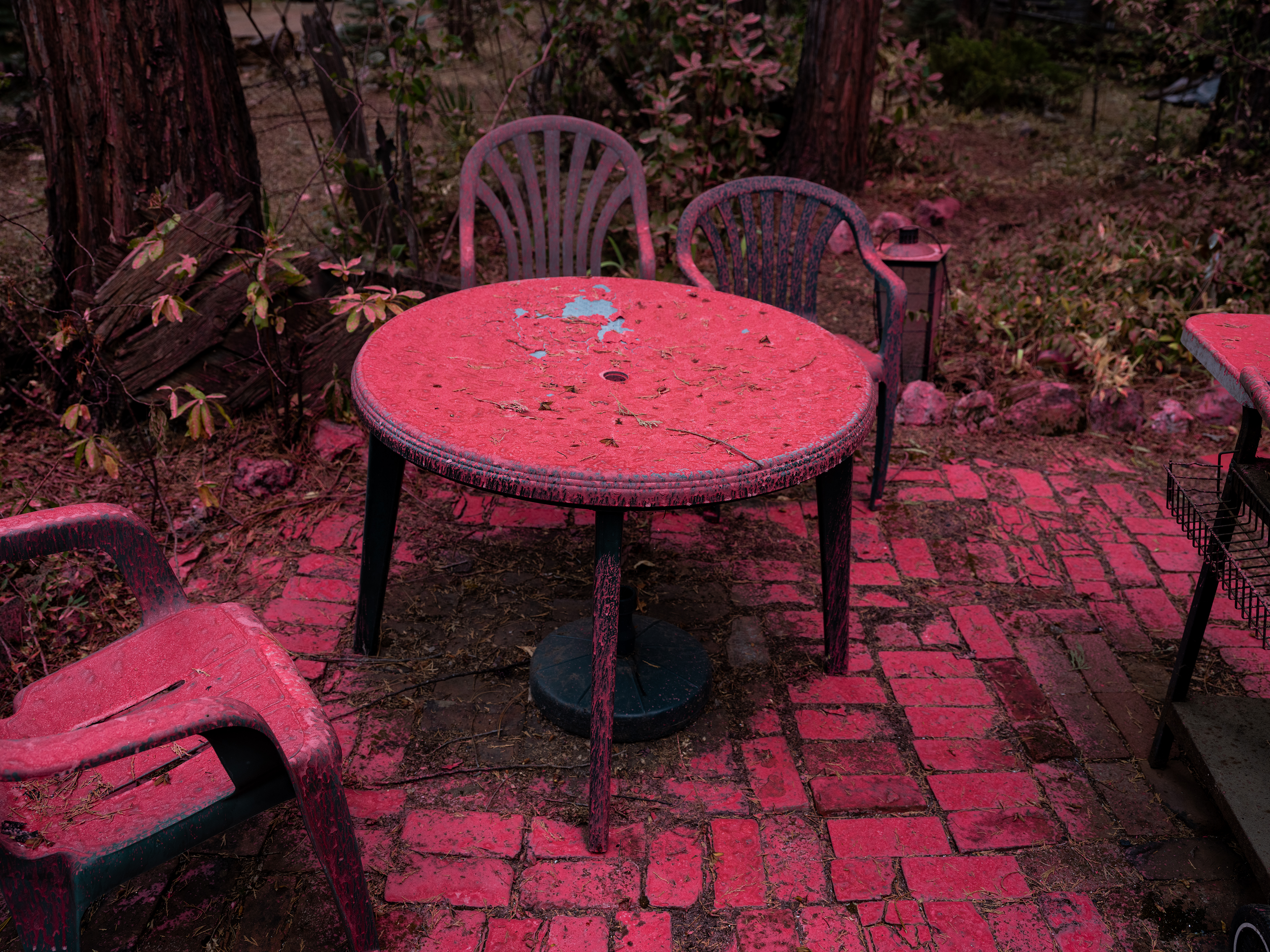


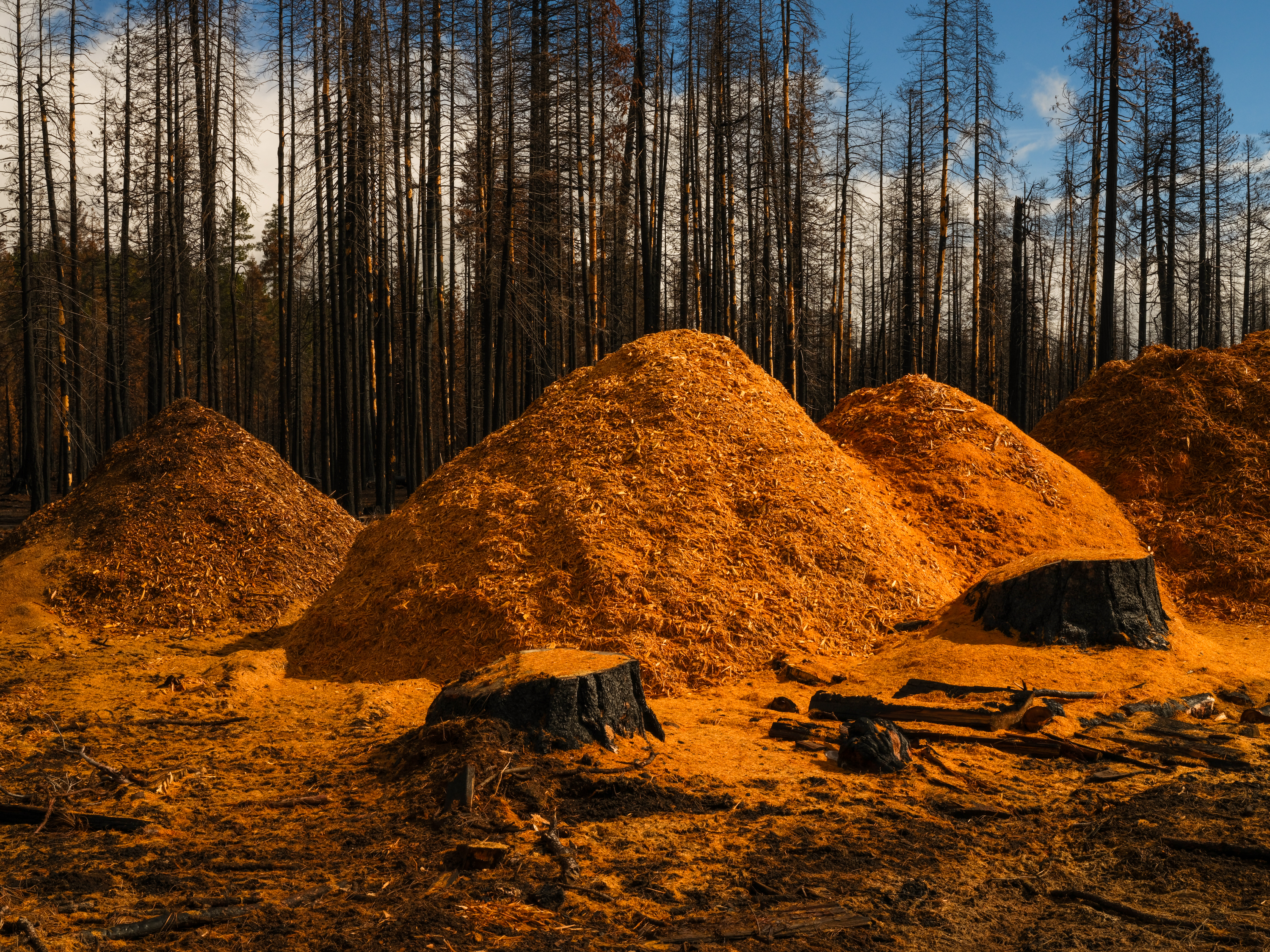
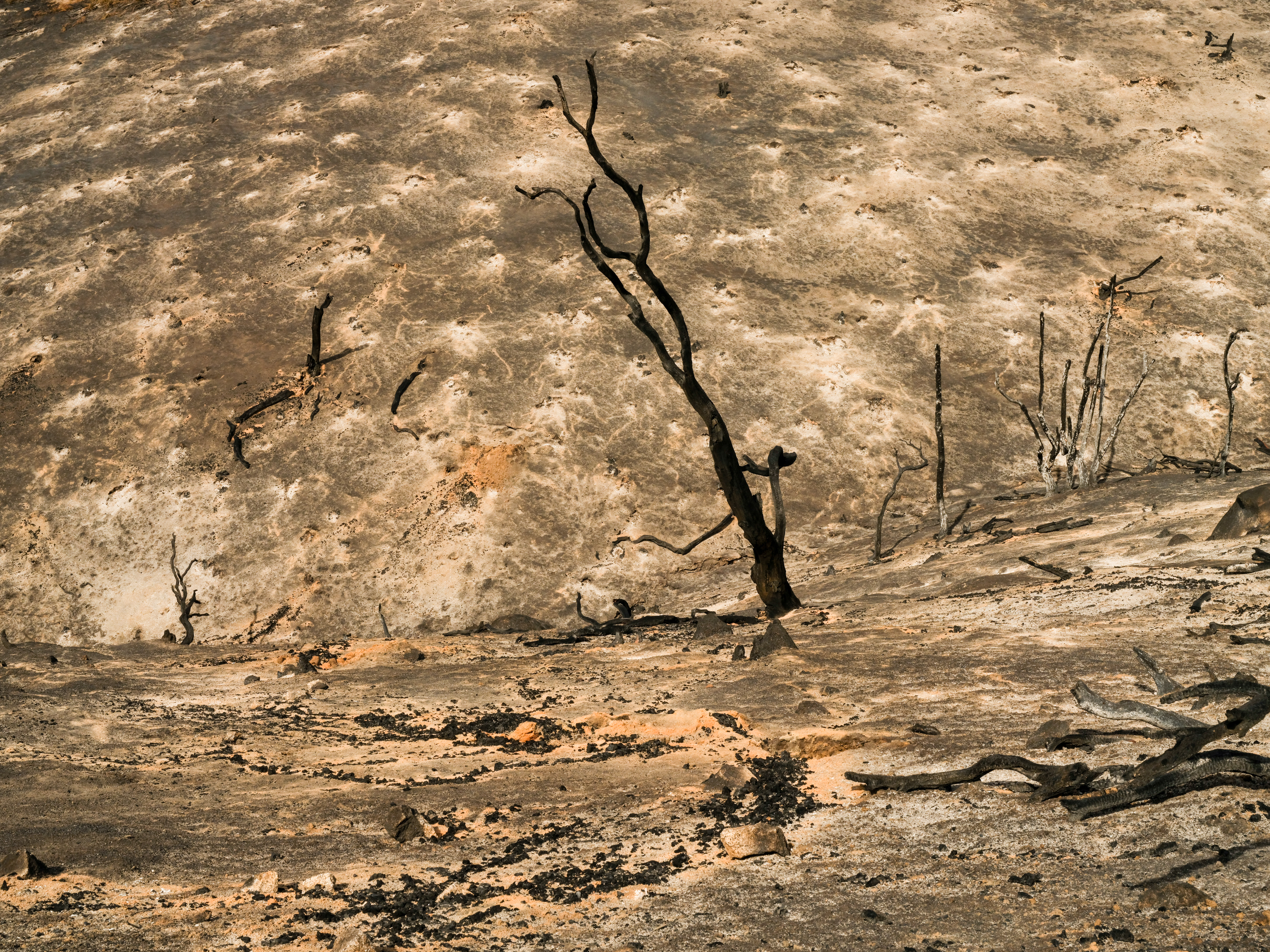


Volcanoville is an exploration into the new climate reality of extreme fire behavior. For fourteen months between July 2021 and September 2022, I made nine solo trips to the uppermost counties of northern California where fire activity in the state is most concentrated. In August 2022 I also photographed in southern Oregon. I typically travel for several days or weeks at a time following a process that is both intuitive and heavily researched.
Although I am influenced by the documentary tradition, I am not presenting these pictures as reportage of wildfires. My intention with Volcanoville is to see in a more mythic way, to photograph along the boundary line between death and survival. Where I like to work is further out from the emergency frontlines where there are fewer stories. It’s on the outskirts, in this liminal space, that the psyche of the landscape and its people feel visible to me.
Portraiture is an essential part of this process, and unlike the landscape images which are all digital, the portraits are made using a 4x5 large format field camera. I made this decision for aesthetic and ethical reasons. Everyone I approach is a stranger and the context in which we meet is often deeply emotional. The analog process is slow and invites a more collaborative experience. I also find that the film portraits resonate with greater emotional depth.
The title, Volcanoville, is a reference to the name of a small California mountain town spared in 2022 by crews fighting the Mosquito Fire. More significantly, the title and its evocative associations speaks to our current proximity to the terrors and tragedy of life in this epoch of climate change.